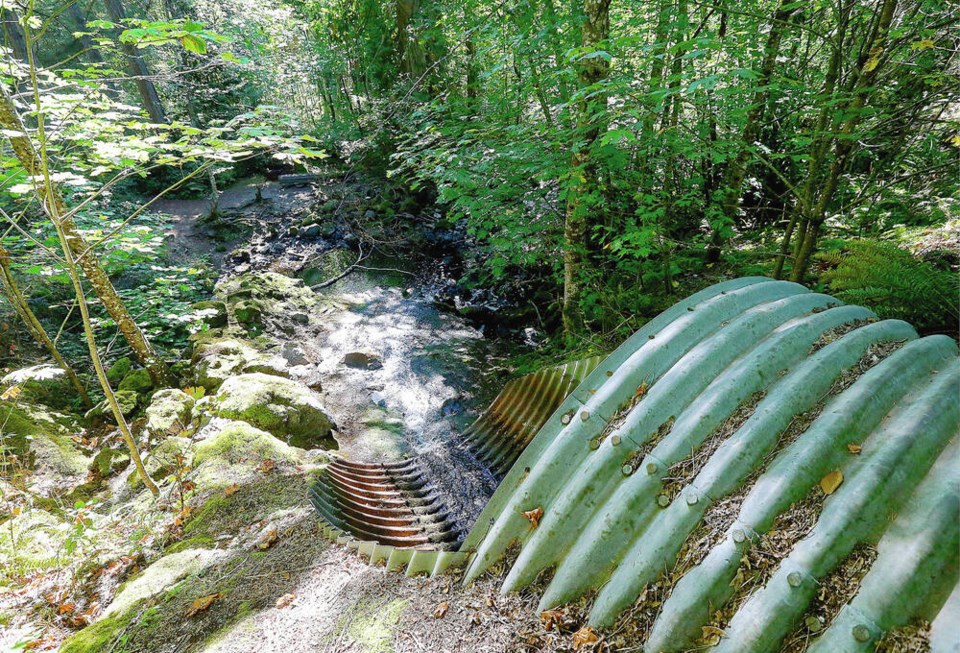B.C.’s climate preparedness and adaptation strategy is still in draft form. Based on the historic deluge over the weekend, it’s clear they need to pick up the pace.
The work plan’s “action highlights” for 2021 in the overall strategy include “conduct initial work on a B.C. flood strategy.”
Good idea. Better idea five years ago.
“Broaden the province’s understanding of food security,” is also on the to-do list. Panic buyers that were standing in line at empty grocery stores already have the understanding there are some issues. Also in the works is the idea of “promoting reliable transportation networks by assessing climate impacts on vulnerable highway culverts.”
Too late for that. The vulnerable culverts are destroyed on many routes.
The Malahat is drastically curtailed. The Coquihalla Highway is closed for weeks or months. Arterial routes out of Metro Vancouver are restricted.
Another action highlight is to expand disaster risk management and “improve response to extreme heat and wild fire smoke” for the homeless. That was completely overtaken last summer by the lethal heat dome that killed almost 600 people who were in their homes.
One recurring line from political leaders facing the assorted emergencies of the Roaring 20s so far is that they are all “once in a lifetime” events.
The heat dome was a “one in a thousand years” event. Earlier wildfire years were described in similar terms. Premier John Horgan dwelled on the words “unprecedented” and “extraordinary” at a briefing about the storm damage.
The freakish nature is stressed partly to excuse some of the inevitable falldowns that crop up in government responses to the emergencies. It’s impossible to be ready for a November’s worth of rain in just three days.
But it’s hard to stand up and admit that. People expect much more.
So emphasizing the unprecedented nature helps to explain away delays or gaps in the responses. (They are separate from the outstanding work of emergency crews, who are going above and beyond all over B.C.)
The trouble is that when all the emergencies pile up and start recurring within months of each other, “once in a lifetime” loses all meaning. Extreme weather now looks to be a fact of life. The 100-year patterns can’t be used as predictors any more.
A lot of the emphasis on climate change in the 14 years since the B.C. government officially recognized it as a crisis needing a response has been on mitigation. As in, planning ways to reduce emissions over 30 years in hopes it will eventually smooth out weather patterns.
It’s time to elevate the work on adaptation as well. As in, coping with these crises in real time. Starting with more robust emergency response capabilities all around.
A lot of thinking has been done on adaptation by provincial authorities and municipal leaders. An extra $90 million was recently earmarked for work in that area. It’s time to start acting on it in a much bigger way.
The draft strategy as it stands has an apocalyptic tone to it. But this year alone has shown how the premises are actually conservative. They’ve been overtaken by events.
For instance, the earlier risk assessment in 2019 said some of the greatest risks are wildfires, water shortages and heat waves.
Severe river flooding was considered less likely to occur. Up until this week, when yet another 100-year event happened.
Horgan said the government’s “roadmap to 2030” climate change plan offers hope to people who understand the extreme weather stems from human-caused climate change. Fraser Valley farmers waiting for the water to ebb so they can deal with all the dead livestock will be unmoved by that pledge. As will many others.
Adaptation to cope with the impacts right now is at least as important as mitigating the disasters to come. It’s a stunningly expensive list of things that need doing. It starts with improving alert systems, and declaring emergencies when they happen, not days later. But it goes far beyond that.
There’s a long list of people and organizations that are working flat out to cope with the storm damage. But they need a lot more support over time. Otherwise, the impression will build that this is starting to get away on us.





